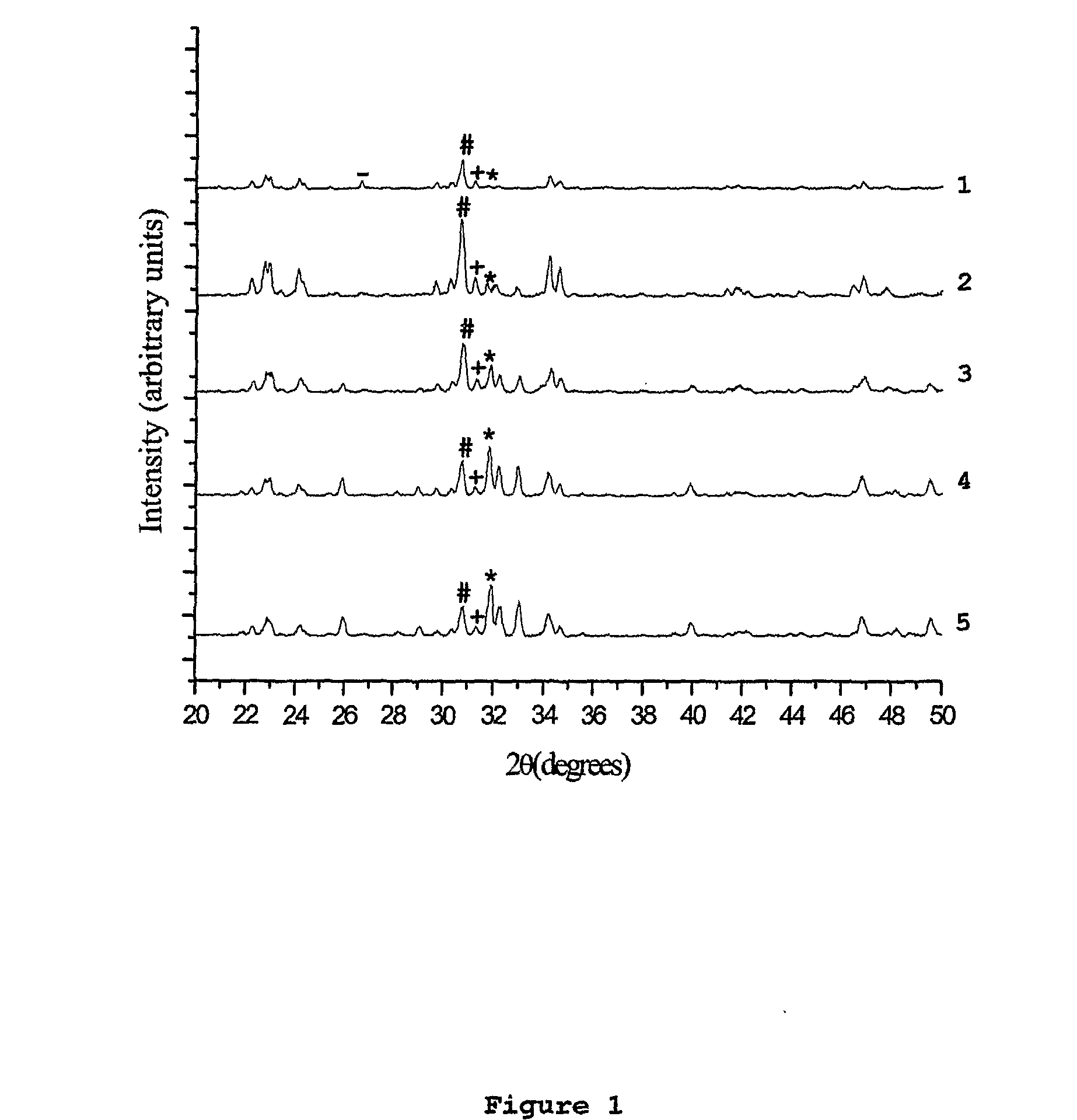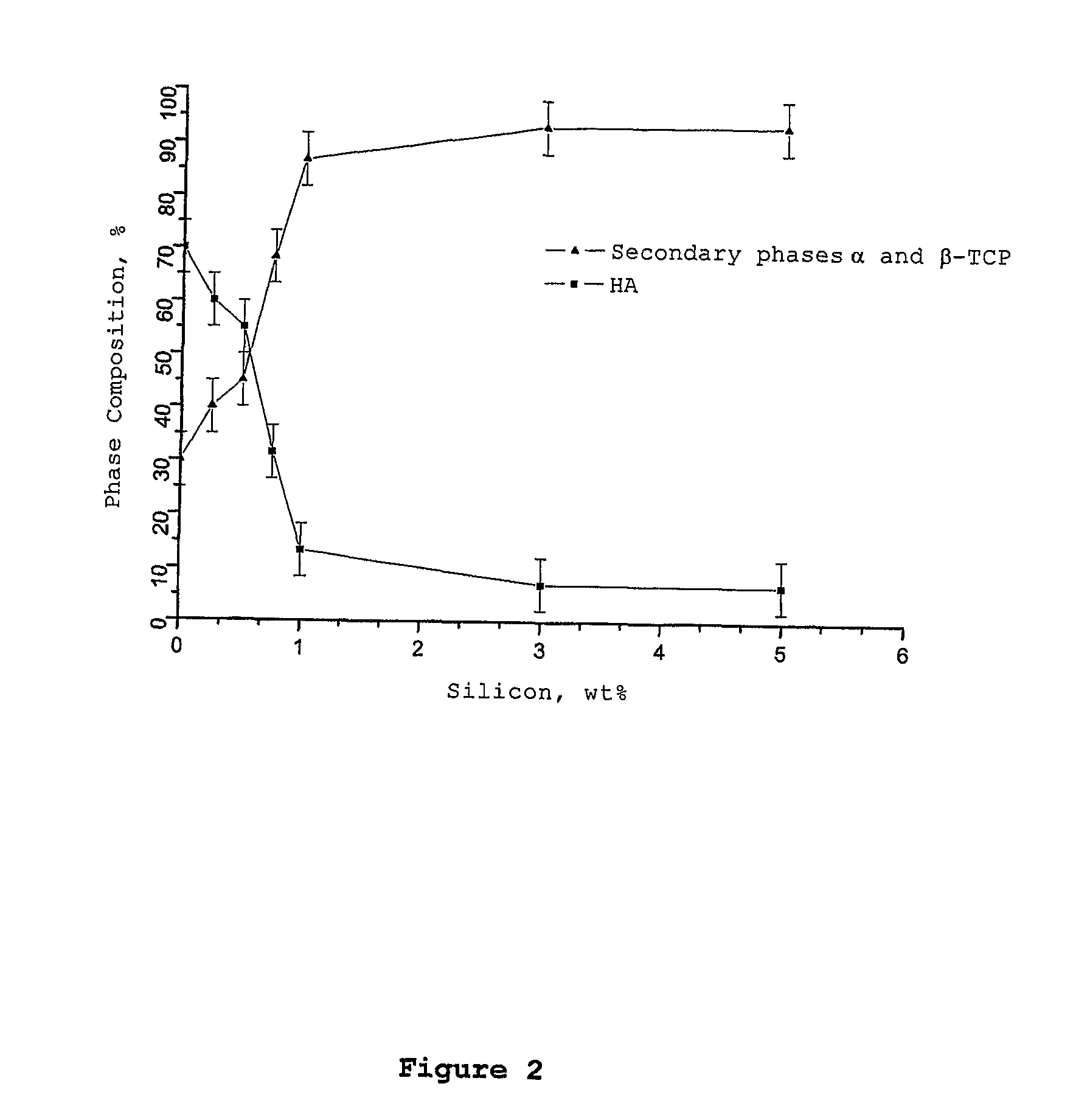Hydroxyapatite, biocompatible glass and silicon-based bone substitute, production process and applications thereof
a biocompatible glass and silicon-based technology, applied in the field of medical devices, can solve the problems of bone defects, donor site morbidity associated with haemorrhage, fracture and congenital malformation non-union,
- Summary
- Abstract
- Description
- Claims
- Application Information
AI Technical Summary
Benefits of technology
Problems solved by technology
Method used
Image
Examples
example 1
Synthetic Bone Preparation with Granular Format
Hydroxyapatite Preparation:
[0043]100 g of hydroxyapatite are prepared by chemical precipitation according to the following chemical reaction:
10Ca(OH)2+6H3(PO)→Ca10(PO4)6(OH)2+18H2O
[0044]In order to achieve that, 74.09 g of calcium hydroxide (Ca(OH)2, >98%), 69.03 g of orthophosphoric acid 85 (wt / v) % (H3PO4) are weighed. Then, the calcium hydroxide is added to 1800 mL of purified water in a large container, and mixed (Mixer R25) during 15 minutes.
[0045]Meanwhile, orthophosphoric acid is added to 1600 mL of purified water in a beaker with 1800 mL capacity, and the volume is completed with purified water. The addition of orthophosphoric acid is performed via peristaltic pump (Minipuls 2) at a constant rate of 150 rpm.
[0046]The mixture is performed during 4-5 hours, and cleaning of the calcium hydroxide container walls with purified water is required in order to prevent precipitate accumulation. Throughout the process, a pH control using a...
PUM
 Login to View More
Login to View More Abstract
Description
Claims
Application Information
 Login to View More
Login to View More - R&D
- Intellectual Property
- Life Sciences
- Materials
- Tech Scout
- Unparalleled Data Quality
- Higher Quality Content
- 60% Fewer Hallucinations
Browse by: Latest US Patents, China's latest patents, Technical Efficacy Thesaurus, Application Domain, Technology Topic, Popular Technical Reports.
© 2025 PatSnap. All rights reserved.Legal|Privacy policy|Modern Slavery Act Transparency Statement|Sitemap|About US| Contact US: help@patsnap.com



